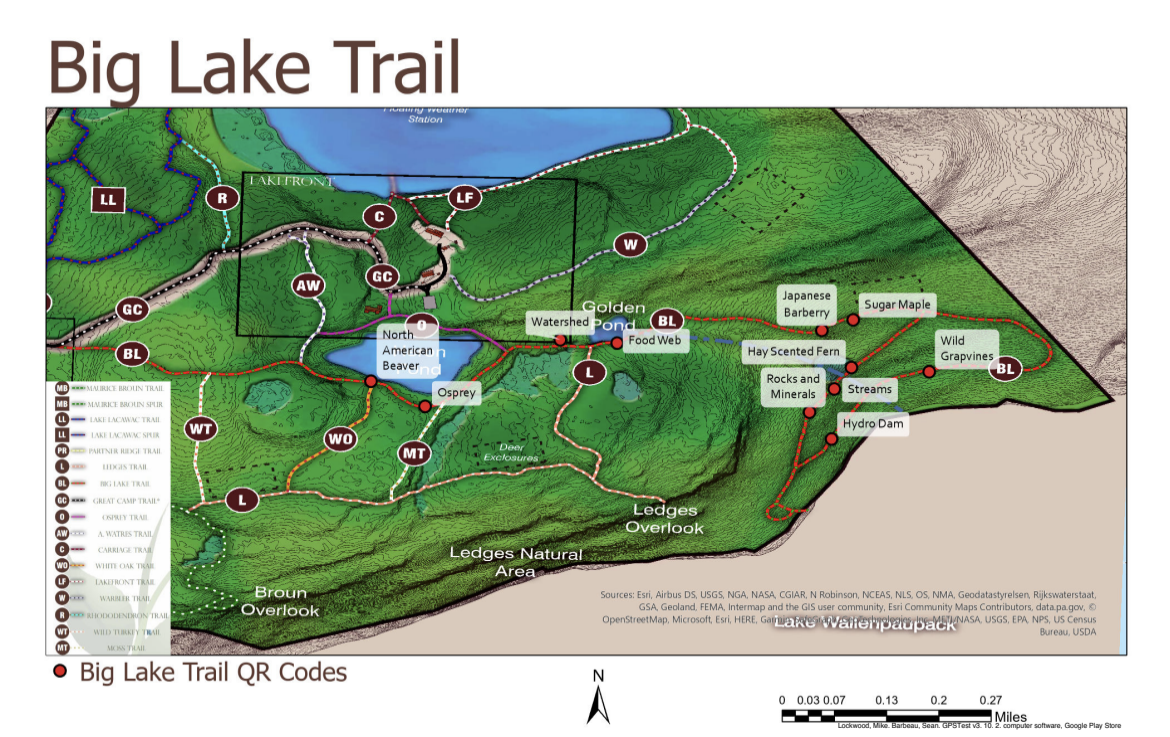Welcome to The Big Lake Trail!
This 2.95 mile path is smooth and wide, traversing an old forest road.
You will start out through a mixed hemlock and oak forest then descend into a mixed hardwood forest. Most of this area was completely logged in the late 1800's and periodically again in spots up until the late 1950's.
Trail highlights include Heron and Golden ponds, a scenic view of Lake Wallenpaupack, and outstanding habitats to view birds, animals, aquatic life and wetland plant species.
Enjoy your hike!
Location |
|
